 |
by staff on (#1HG8E)
Since its announcement at SC15 in November, the OpenHPC community has made important strides toward its mission of creating and supporting a flexible open source HPC software stack that simplifies deploying and managing HPC systems. In just a few short months, the open source community hosted at The Linux Foundation has had many productive working group discussions, installed a Technical Steering Committee (TSC) and Governing Board, and even provided releases of the initial software stack based on early community feedback. The initial software stack includes over 60 packages, including tools and libraries, as well as provisioning, a job scheduler and more.The post Efforts to Broaden HPC Accelerate as OpenHPC Governing Board and Technical Steering Committee Takes Shape appeared first on insideHPC.
|
 Inside HPC & AI News | High-Performance Computing & Artificial Intelligence
Inside HPC & AI News | High-Performance Computing & Artificial Intelligence
| Link | https://insidehpc.com/ |
| Feed | http://insidehpc.com/feed/ |
| Updated | 2025-12-16 21:00 |
 |
by staff on (#1HG0Z)
Today Italy's E4 Computer Engineering announced plans to showcase of new NVIDIA GPU-accelerated OpenPOWER servers at ISC 2016 in Frankfurt. "For this edition of ISC16, we wanted to reinforce the message that E4 is a company that actively engages and pursues new technologies’ paths with the aim to deliver leading-edge solutions for a number of demanding environments,†said Piero AltoeÌ€, Marketing and BDM Manager, E4 Computer Engineering. “Our priority is to collaborate with organizations such as OpenPOWER Foundation and true visionaries like NVIDIA in order to obtain powerful, scalable and affordable solutions for a number of complex applications and contribute to the development of technologies that have a huge impact on many aspects of our lives.â€The post E4 to Showcase GPU-Accelerated OpenPOWER Servers at ISC 2016 appeared first on insideHPC.
|
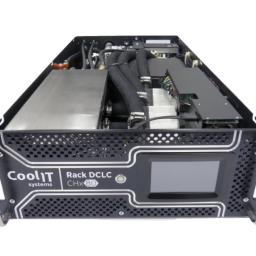 |
by Rich Brueckner on (#1HFQN)
Today CoolIT Systems rolled out its new CHx80 Heat Exchange Module. As part of an expanded its Rack DCLC product line, this next generation liquid-to-liquid heat exchanger provides cooling capacity with N+1 reliability to manage the most challenging, high density HPC racks. CoolIT will showcase the rack-mount CHx80 at ISC16 in Frankfurt.The post CoolIT Systems Rolls Out Rack DCLC CHx80 Heat Exchange Module appeared first on insideHPC.
|
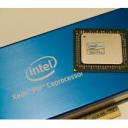 |
by MichaelS on (#1HDC9)
The vector parallel capabilities of the Intel Xeon Phi coprocessor are similar in many ways with vectorizing code for the main CPU. The performance improvement when coding smartly and using the tools available can be tremendous. Since the Intel Xeon Phi coprocessor can show very large gains in performance due to its extra wide processing units. "Although it is time consuming to look at each and every loop in a large application, by doing so, and both telling the compiler what to do, and letting the compiler do its work, performance increases can be quite large, leading to shorter run times and/or more complete results."The post Helping the Compiler Speed Intel Xeon Phi appeared first on insideHPC.
|
 |
by Rich Brueckner on (#1HD3Q)
"For SC16, we’re beginning a three-year thrust that will expand state-of-the-practice discussions with content throughout the conference tracks that emphasizes the innovation happening in operations, tools, and software through today’s HPC centers. I’ve spent my career so far in HPC operations of one kind or another, and I know firsthand that there is an incredible wealth of knowledge and expertise that gets developed in supercomputing centers. SC is well established as the place to share academic results; we believe SC can have a large impact on our community by providing developers and researchers with a more operational focus with a forum to share their results as well."The post SC16 General Chair John West on Moving the HPC Community Forward appeared first on insideHPC.
|
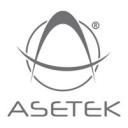 |
by Rich Brueckner on (#1HD15)
Asetek will highlight its liquid cooling solutions and successful installations at ISC 2016 next week in Frankfurt. For the first time, Asetek will be displaying its new InRackCDU cooling solution. InRackCDU provides the option of having RackCDU mounted in the server rack. InRackCDU does not take up aisle space and includes the same monitoring features as Asetek’s VerticalRackCDU.The post Asetek to Showcase Liquid Cooling at ISC 2016 appeared first on insideHPC.
|
 |
by staff on (#1HCZX)
The Numerical Algorithms Group (NAG) has engineered NAG C Library algorithms to execute efficiently on Cavium ThunderX ARMv8-A based Workload Optimized Processors. Preliminary results, announced at ISC 2016, show excellent scaling across 96 cores of ThunderX in a dual socket configuration.The post NAG Optimizes C and C++ Algorithms for ARM-based Cavium ThunderX Processors appeared first on insideHPC.
|
 |
by Rich Brueckner on (#1HCR3)
"My team at the University of Minnesota has been collaborating with the team of Falk Herwig at the University of Victoria to simulate brief events in the lives of stars that can greatly affect the heavy elements they synthesize in their interiors and subsequently expel into the interstellar medium. These events are caused by the ingestion of highly combustible hydrogen-rich fuel into the convection zone above a helium burning shell in the deeper interior. Although these events are brief, it can take millions of time steps to simulate the dynamics in sufficient detail to capture subtle aspects of the hydrogen ingestion. To address the computational challenge, we exploit modern multicore and many-core processors and also scale the simulations to run efficiently on over 13,000 nodes of NSF's Blue Waters machine at NCSA."The post Simulations of Hydrogen Ingestion Flashes in Giant Stars appeared first on insideHPC.
|
 |
by Rich Brueckner on (#1HCN8)
Today the Linux Foundation announced a set of technical, leadership and member investment milestones for OpenHPC, a Linux Foundation project to develop an open source framework for High Performance Computing environments. "The OpenHPC community has quickly paved a path of collaborative development that is highly inclusive of stakeholders invested in HPC-optimized software,†said Jim Zemlin, executive director, The Linux Foundation. “To see OpenHPC members include the world’s leading computing labs, universities, and hardware experts, illustrates how open source unites the world’s leading technologists to share technology investments that will shape the next 30+ years of computing.â€The post OpenHPC Establishes Leadership & Releases Initial Software Stack appeared first on insideHPC.
|
 |
by staff on (#1HCN9)
Scientists from a wide range of disciplines gathered at the SwissTech Convention Center in Lausanne from 8 to 10 June 2016 for this year’s PASC Conference. The use of high-performance computing in their research was the common bond that brought them together. From 8 to 10 June, the SwissTech Convention Center played host to around 360 scientists from Europe, the USA, Canada, Japan, Russia, Saudi Arabia, South Africa and Singapore, offering plenty of space and scope for them to engage in an interdisciplinary discourse on current issues relating to scientific computing.The post PASC16 Wraps in Lausanne appeared first on insideHPC.
|
 |
by Rich Brueckner on (#1HCFS)
"Today’s acquisition of QLogic is highly complementary and strategic to Cavium and it creates a diversified pure-play infrastructure semiconductor leader,†stated Syed Ali, President and Chief Executive Officer of Cavium. “QLogic’s industry leading products extend our market position in data center, cloud and storage markets, and further diversifies our revenue and customer base. In addition to the compelling strategic benefits, the manufacturing, sales and operating synergies will create significant value for our shareholders.â€The post Cavium to Acquire QLogic appeared first on insideHPC.
|
 |
by Rich Brueckner on (#1H9J5)
Today IBM and the University of Calgary announced a five-year collaboration to accelerate and expand genomic research into common childhood conditions such as autism, congenital diseases and the many unknown causes of illness. As part of the collaboration, IBM will augment the existing research capacity at the Cumming School of Medicine’s Alberta Children's Hospital Research Institute by installing a POWER8-based computing and storage infrastructure along with advanced analytics and cognitive computing software.The post IBM POWER8 System to Advance Genomic Health Research at University of Calgary appeared first on insideHPC.
|
 |
by staff on (#1H955)
Pressures by management for cost containment are answered by improving software maintenance procedures and automating many of the repetitive activities that have been handled manually. This lowers Total Cost of Ownership (TCO), boosting IT productivity, and increasing return on investment (ROI).The post How to Control Your Supercomputing Programs appeared first on insideHPC.
|
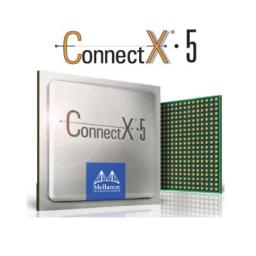 |
by Rich Brueckner on (#1H921)
“Today, scalable compute and storage systems suffer from data bottlenecks that limit research, product development, and constrain application services. ConnectX-5 will help unleash business potential with faster, more effective, real-time data processing and analytics. With its smart offloading, ConnectX-5 will enable dramatic increases in CPU, GPU and FPGA performance that will enhance effectiveness and maximize the return on data centers’ investment.â€The post Slidecast: Announcing Mellanox ConnectX-5 100G InfiniBand Adapter appeared first on insideHPC.
|
 |
by Rich Brueckner on (#1H8T8)
The National Center for Supercomputing Applications at the University of Illinois at Urbana-Champaign is helping change the way genetic medicine is researched and practiced in Africa. Members of the Blue Waters team recently made it possible to discover genomic variants in over 300 deeply sequenced human samples to help construct a genotyping chip specific for […]The post Supercomputing Genetic Medicine in Africa appeared first on insideHPC.
|
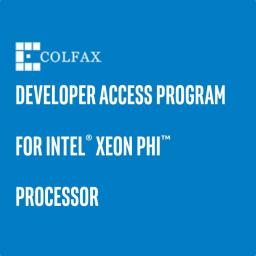 |
by Rich Brueckner on (#1H8RR)
With the release of a Developer Access Program for the Intel Xeon Phi Processor codenamed Knights Landing, Intel and its partner Colfax are widening early levels of access, support and training for the widely anticipated next-generation Intel Xeon Phi processor release. The Developer Access Program gives developers the opportunity to begin leveraging key new capabilities in the processor before they are generally available. That means developers will have time to work to parallelize and vectorize their code and look for opportunities to exploit the massive performance capabilities that KNL offers so workloads are ready for prime time when customers deploy their next-generation systems.The post New Developer Platform to Accelerate Adoption of Knights Landing appeared first on insideHPC.
|
 |
by Rich Brueckner on (#1H8Q1)
The NCSA Blue Waters project is offering a Workflows Workshop virtual course in August. To share this class with as many students as possible, they are seeking universities willing to be a local site and offer the course to their students.The post Host an HPC Workflow Workshop at your Site in August appeared first on insideHPC.
|
 |
by Rich Brueckner on (#1H6AA)
Today Cycle Computing announced that angel investment firm WorldQuant Ventures has invested in Cycle Computing. This is the company's first outside investment. "We are excited to announce our investment in Cycle Computing,†said Steven Lau, Managing Director at WorldQuant Ventures. “Companies in the financial services industry are increasingly turning to computing resources to help meet business and regulatory needs. We believe Cycle Computing’s innovative cloud computing platform, along with the growing demand for computing services, provides an attractive investment opportunity for WorldQuant Ventures.â€The post WorldQuant Ventures Invests in Cycle Computing appeared first on insideHPC.
|
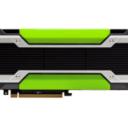 |
by staff on (#1H5B7)
For Universities and Colleges that have a traditional infrastructure, adding new programs and applications is a huge endeavor. The IT staff needs to determine if all of the hardware meets the installation requirements and how to deploy these new programs on different models of desktops and notebooks. With a VDI environment that utilizes simple boot-up devices that connect to virtual desktops on the school’s server, the IT staff doesn’t have to worry about the age and capability of each individual PC when installing new software.The post The GPUltima for Graphics-Intensive VDI Environments appeared first on insideHPC.
|
 |
by Rich Brueckner on (#1H5B9)
Bright Computing’s recently appointed Silicon Valley-based management team, including CEO Bill Wagner and SVP Worldwide Sales Dan Kuczkowski, will be at the Bright booth, as well as Bright’s leading technical experts, giving booth visitors the opportunity to hear about Bright’s corporate strategy, the company’s latest product developments, and gain insight into the Bright roadmap.The post Bright Computing to Showcase System Management Software at ISC 2016 appeared first on insideHPC.
|
 |
by Rich Brueckner on (#1H578)
Today the Numerical Algorithms Group (NAG) has announced the NAG Software Modernization Service. The new service solves the porting and performance challenges faced by customers wishing to use the capabilities of modern computing systems, such as multi-core CPUs, GPUs and Xeon Phi. NAG HPC software engineering experts modernize the code to enable portability to appropriate architectures, optimize for performance and assure robustness.The post NAG Rolls Out Software Modernization Service appeared first on insideHPC.
|
 |
by Rich Brueckner on (#1H544)
"With more than a decade of experience in designing, installing and supporting Lustre-based storage, DDN is the most experienced Lustre provider and has worked closely with us over many years to design optimized Lustre-based storage systems. DDN’s latest ES14K offering delivers a high-performing, high density appliance for the HPC market built on Intel Enterprise Edition for Lustre,†said Brent Gorda, GM of Intel’s High Performance Data Division.The post DDN Launches ES14K Storage Appliance with Intel Lustre for the Enterprise appeared first on insideHPC.
|
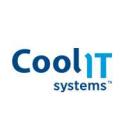 |
by Rich Brueckner on (#1H50C)
Today CoolIT Systems announced that the company will showcase its energy efficient liquid cooling technologies for HPC at ISC 2016 in Frankfurt. "Our comprehensive offering of energy efficient liquid cooling solutions at ISC16 far exceeds anything CoolIT has done in the past,†says CoolIT Systems CEO and CTO Geoff Lyon. “With Europe at the forefront of energy efficient HPC, attendees can discover how rapidly the liquid cooling market is maturing, as evidenced by our growing list of global customers and OEM partners.â€The post CoolIT Systems to Showcase Next Generation Liquid Cooling at ISC 2016 appeared first on insideHPC.
|
 |
by Rich Brueckner on (#1H23A)
The Materials Project has enabled some of the most exciting research in my group,†said Morgan, who also serves on the Materials Project’s advisory board. “By providing easy access to a huge database, as well as tools to process that data for thermodynamic predictions, the Materials Project has enabled my group to rapidly take on materials design projects that would have been prohibitive just a few years ago.â€The post Materials Lab at LBNL Releases Battery and Molecule Data to Public appeared first on insideHPC.
|
 |
by staff on (#1H23C)
The Pittsburgh Supercomputing Center (PSC) celebrated its 30th anniversary last week. "The beginning of PSC’s fourth decade will see the center with two new supercomputers—the NSF-funded Bridges system, already operational and due for completion this fall, and an Anton 2 molecular dynamics simulation system, provided at no charge by D. E. Shaw Research and with operational funding from the National Institutes of Health to be hosted at PSC also beginning in the Fall."The post PSC Celebrates 30 Years of Supercomputing appeared first on insideHPC.
|
 |
by Rich Brueckner on (#1H21R)
In this video, Dr. Toni Collis from the Women in HPC community presents: The Importance of Grace and Why We Need More Women in HPC. "The underrepresentation of women is a challenge that the entire supercomputing industry faces. Research shows that diverse teams increase productivity, and yet HPC still struggles to attract and retain female users. "The post Video: Why We Need More Women in HPC appeared first on insideHPC.
|
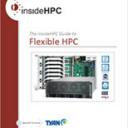 |
by MichaelS on (#1H1WP)
While all users of HPC technology want the fastest performance available, price and power consumption always seem to come into play, whether in the initial planning or at a later time. Standard performance measures exist that may or may not relate to an end user’s application mix, but it is important to understand the various benchmark results that go into determining the performance of a CPU, a server or an overall cluster.The post InsideHPC Guide To Flexible HPC appeared first on insideHPC.
|
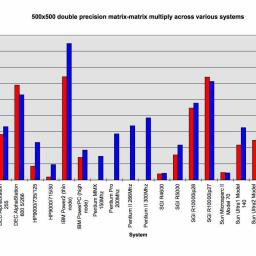 |
by Rich Brueckner on (#1H1TG)
SC16 has announced the winner of their Test of Time Award. This year the winning paper "Automatically Tuned Linear Algebra Software" by Clint Whaley and Jack Dongarra. The paper, which has received hundreds of citations with new citations still appearing, is about ATLAS - an autotuning, optimized implementation of the Basic Linear Algebra Subprograms (BLAS).The post 1998 ATLAS Paper Wins SC16 Test of Time Award appeared first on insideHPC.
|
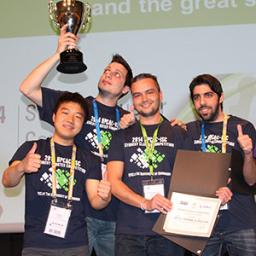 |
by Rich Brueckner on (#1H149)
ISC 2016 is only a week away, and the conference expects to host over 3000 supercomputing professionals from around the world. To bring some of the highlights home, the conference is planning to livestream video from the HPCAC-ISC Student Cluster Competition Awards Session.The post ISC to Livestream Student Cluster Awards Ceremony appeared first on insideHPC.
|
 |
by Rich Brueckner on (#1GY3H)
OCF in the UK reports that the company continues to expand its operations. The high performance computing integrator is recruiting a number of new staff to meet the growing appetite and demand for HPC and data analytics solutions across universities, research institutes and commercial businesses in the UK.The post OCF Staffs Up Largest HPC Delivery Team in the UK appeared first on insideHPC.
|
 |
by Rich Brueckner on (#1GXKK)
Gleb Budman from Backblaze presented this talk at the 2016 MSST Conference. "For Q1 2016 we are reporting on 61,590 operational hard drives used to store encrypted customer data in our data center. In Q1 2016, the hard drives in our data center, past and present, totaled over one billion hours in operation to date. That’s nearly 42 million days or 114,155 years worth of spinning hard drives. Let’s take a look at what these hard drives have been up to."The post Learnings from Operating 200 PB of Disk-Based Storage appeared first on insideHPC.
|
 |
by Rich Brueckner on (#1GVP0)
David Bolton from Slashdot shows how ‘embarrassingly parallel’ code can be sped up over 2000x (not percent) by utilizing Intel tools including the Intel Python compiler and OpenMP. "The Intel Distribution for Python* 2017 Beta program is now available. The Beta product adds new Python packages like scikit-learn, mpi4py, numba, conda, tbb (Python interfaces to Intel Threading Building Blocks) and pyDAAL (Python interfaces to Intel Data Analytics Acceleration Library). "The post Video: Speeding Up Code with the Intel Distribution for Python appeared first on insideHPC.
|
 |
by Rich Brueckner on (#1GVM8)
Lawrence Livermore National Lab is seeking an Associate Director for Computation in our Job of the Week. LLNL seeks to fill the position of Associate Director (AD) for Computation, a position key to the continued success of LLNL’s world-premier high performance computing, computer science, and data science enterprise. The AD for Computation is responsible for […]The post Job of the Week: Associate Director for Computation at Livermore appeared first on insideHPC.
|
 |
by staff on (#1GRWB)
Argonne Distinguished Fellow Paul Messina has been tapped to lead the Exascale Computing Project, heading a team with representation from the six major participating DOE national laboratories: Argonne, Los Alamos, Lawrence Berkeley, Lawrence Livermore, Oak Ridge and Sandia. The project will focus its efforts on four areas: Applications, Software, Hardware, and Exascale Systems.The post Paul Messina on the New ECP Exascale Computing Project appeared first on insideHPC.
|
 |
by Rich Brueckner on (#1GRS1)
Intel is offering a 4-part summer series of developer training workshops at Stanford University to introduce high performance computing tools.The post Intel Developer Summer Workshops Coming to Stanford appeared first on insideHPC.
|
 |
by Rich Brueckner on (#1GRDP)
Today the ACM Association for Computing Machinery announced the election of new officers who will lead the organization for a two-year term beginning July 1. Heading the new team will be incoming President Vicki L. Hanson. Hanson is a Distinguished Professor of Computing at Rochester Institute of Technology, and Professor and Chair of Inclusive Technologies at University of Dundee. Joining Hanson as Vice President will be Cherri M. Pancake, Professor Emeritus and Intel Faculty Fellow in the School of Electrical Engineering and Computer Science at Oregon State University; and, as Secretary/Treasurer, Elizabeth Churchill, Director of User Experience at Google.The post ACM Elects First All-Female Leadership Team appeared first on insideHPC.
|
 |
by Rich Brueckner on (#1GRB7)
In this video from the PASC16 conference, Patrick Sanan from USi Lugano & ETC Zurich presents: Extreme-Scale Multigrid Components within PETSc. "Elliptic partial differential equations (PDEs) frequently arise in continuum descriptions of physical processes relevant to science and engineering. Multilevel preconditioners represent a family of scalable techniques for solving discrete PDEs of this type and thus are the method of choice for high-resolution simulations."The post Video: Extreme-Scale Multigrid Components within PETSc appeared first on insideHPC.
|
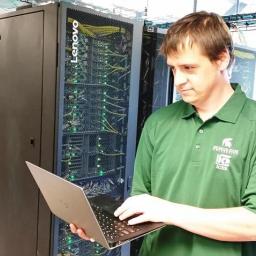 |
by Rich Brueckner on (#1GR91)
In this WKAR podcast, Andy Keen from Michigan State University describes MSU's new Laconia supercomputer. The $3-million system is part of a cluster that’s run by their ICER High Performance Computing Center. "It’s an exciting time for the computational sciences at MSU,†said iCER Director Kennie Merz. “Our researchers are poised to tackle transformative problems ranging from the discovery of new drugs to understanding the universe we live in.â€The post Podcast: Laconia Supercomputer Coming to MSU appeared first on insideHPC.
|
 |
by Rich Brueckner on (#1GP67)
While HPC has its roots in academia and government where extreme performance was the primary goal, high performance computing has evolved to serve the needs of businesses with sophisticated monitoring, pre-emptive memory error detection, and workload management capabilities. This evolution has enabled “production supercomputing,†where resilience can be sustained without sacrificing performance and job throughput.The post insideHPC Guide to Production Supercomputing appeared first on insideHPC.
|
 |
by staff on (#1GN59)
Today Bright Computing announced a partnership with ProfitBricks, the Infrastructure as a Service (IaaS) company based in Germany. "Cloud-based solutions are increasingly appealing as they offer a cost-effective alternative to traditional on-premise solutions," said Petra-Maria Grohs, CSO EMEAA at ProfitBricks. "Infrastructure is no exception and we are excited at the level of interest we are seeing in moving HPC and Big Data environments into the cloud, in order to unlock cost and time savings.â€The post Bright Computing Partners with ProfitBricks for Elastic HPC appeared first on insideHPC.
|
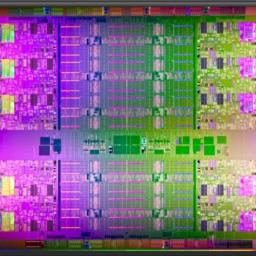 |
by MichaelS on (#1GN0B)
"Directives can be used as hints to the compiler to vectorize a loop. The developer would have better knowledge of any dependencies that a compiler, which must adhere to a number of rules when deciding if a loop can be vectorized. Directives force the compiler to vectorize, based on the knowledge of the developer, thus, if something does not work correctly, it is the responsibility of the developer to fix it, rather than blame the compiler."The post Compiler Directives for High Performance Computing appeared first on insideHPC.
|
 |
by staff on (#1GN0C)
"The performance expectations placed on data centers today are unprecedented and require organizations to make infrastructure decisions that meet today’s demands while anticipating future growth needs,†said Kevin Deierling, vice president of marketing at Mellanox Technologies. “Mellanox’s 25GbE adapters are designed to serve as direct replacement for commonly deployed 10 Gigabit Ethernet adapters. For example, just one port of 25GbE delivers 2.5 times more bandwidth per link, consumes less power, requires half the cabling, and half the switch ports versus multiple 10GbE ports, and thus enables application acceleration at a lower cost.â€The post Mellanox Rolls Out ConnectX-4 25 Gb/s Ethernet Adapters appeared first on insideHPC.
|
 |
by staff on (#1GMYJ)
"Storage technologies are quickly innovating to reduce latency, providing a significant performance improvement for today's cutting-edge applications. NVM Express (NVMe) is a significant step forward in high-performance, low-latency storage I/O and reduction of I/O stack overheads. NVMe over Fabrics is an essential technology to extend NVMe storage connectivity such that NVMe-enabled hosts can access NVMe-enabled storage anywhere in the datacenter, ensuring that the performance of today's and tomorrow's solid state storage technologies is fully unlocked, and that the network itself is not a bottleneck."The post Specification Released for NVM Express over Fabrics appeared first on insideHPC.
|
 |
by Rich Brueckner on (#1GM1Z)
"We live in an era in which the creation of new data is growing exponentially such that every two days we create as much new data as we did from the beginning of mankind until the year 2003. One of the greatest scientific challenges of the 21st century is to effectively understand and make use of the vast amount of information being produced. Visual data analysis will be among our most important tools to understand such large and often complex data. In this talk, I will present state-of-the-art visualization techniques, applied to important Big Data problems in science, engineering, and medicine."The post Chris Johnson Presents: Big Data Visual Analysis appeared first on insideHPC.
|
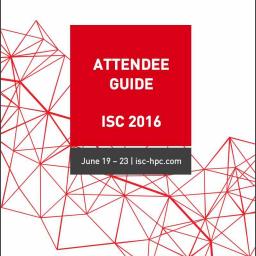 |
by Rich Brueckner on (#1GKS0)
Are you coming to ISC 2016? There's a new helpful Attendee Guide available that includes information on getting there, agenda planning tools, an attendee list, and most everything else you might need to get the most out of your visit to Frankfurt.The post ISC 2016 Attendee Guide is a Great Resource for Frankfurt appeared first on insideHPC.
|
 |
by Rich Brueckner on (#1GH61)
"The US, like the EU and other countries, is engaged in a national initiative that aims to deploy exascale computing platforms early in the next decade. The outlines of such platforms are starting to emerge. We shall survey, in our talk, the current roadmap for exascale computing and the main challenges this roadmap entails. We shall also discuss the likely evolution of HPC beyond exascale, in the "post-Moore" era."The post Marc Snir Presents: Exascale Computing and Beyond appeared first on insideHPC.
|
 |
by Rich Brueckner on (#1GH1G)
Today NVIDIA unveiled a comprehensive global program to support the innovation and growth of startups that are driving new breakthroughs in artificial intelligence and data science. "The NVIDIA Inception Program provides unique tools, resources and opportunities to the waves of entrepreneurs starting new companies, so they can develop products and services with a first-mover advantage."The post NVIDIA Inception Program Offers Tools for Deep Learning appeared first on insideHPC.
|
 |
by Rich Brueckner on (#1GGWQ)
SGI has been positioned by Gartner in the "Visionaries" quadrant of the May 2016 Magic Quadrant for Modular Servers. "Visionaries have an ambitious vision of the future and are making significant investments in the development of unique technologies. "The post Gartner Positions SGI in “Visionaries†Quadrant for Modular Servers appeared first on insideHPC.
|
 |
by Rich Brueckner on (#1GGT0)
"The Women in IT Networking at SC (WINS) program was developed as a means for addressing the prevalent gender gap that exists in Information Technology particularly in the fields of network engineering and high performance computing. The 2015 program* enabled five talented early to mid-career women from diverse regions of the U.S. research and education community IT field to participate in the ground-up construction of SCinet, one of the fastest and most advanced computer networks in the world."The post Call for Participation: Women in IT Networking at SC16 appeared first on insideHPC.
|
 |
by staff on (#1GGNR)
"The Pittsburgh Supercomputing Center recently added Bridges to its lineup of world-class supercomputers. Bridges is designed for uniquely flexible, interoperating capabilities to empower research communities that previously have not used HPC and enable new data-driven insights. It also provides exceptional performance to traditional HPC users. It converges the best of High Performance Computing (HPC), High Performance Data Analytics (HPDA), machine learning, visualization, Web services, and community gateways in a single architecture."The post Building Bridges to the Future appeared first on insideHPC.
|